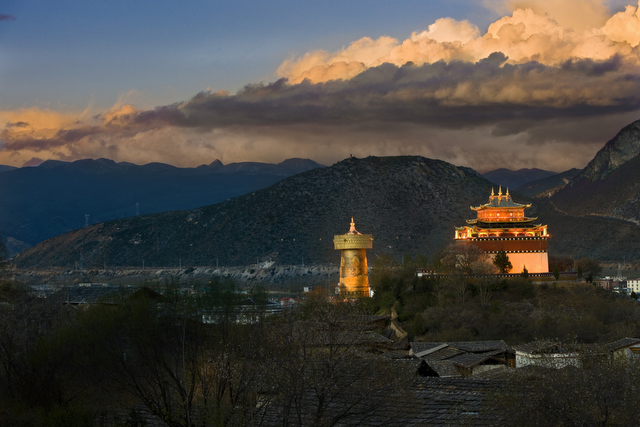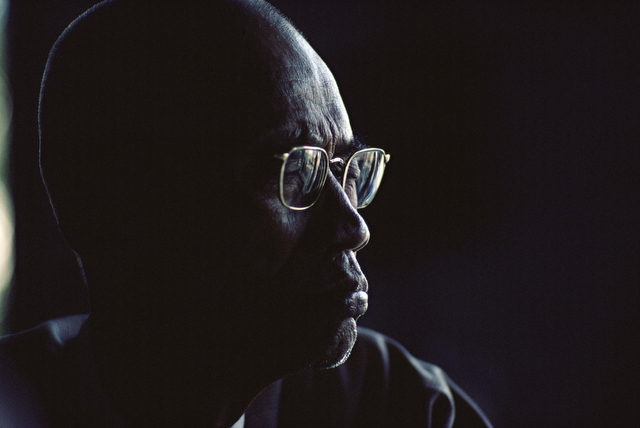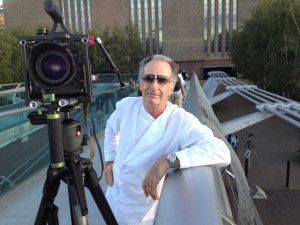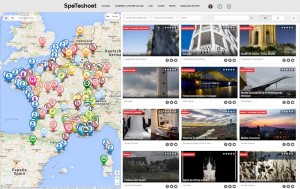Interview de Michael Freeman – Photographe passionné et passionnant
Je pense qu’il n’est pas vraiment nécessaire de présenter Michael Freeman. C’est l’un des photographes les plus largement diffusés dans le monde. Il a travaillé pour la plupart des grands magazines internationaux et éditeurs de livres. Michael Freeman a publié plus de 120 livres sur des sujets aussi variés que Angkor, au Soudan, les minorités ethniques en Asie du Sud, les Shakers, ou encore le design contemporain et l’architecture japonaise. A coté de ça, ses 50 livres sur la pratique de la photographie sont des ouvrages de référence, et ont été écoulés à près de deux millions d’exemplaires dans plus de 20 langues (80% sont traduits en français).
Il enseigne également à l’Open College of the Arts (Royaume-Uni). Même s’il est basé à Londres, il est en reportage photo la moitié de l’année, principalement en Asie, comme actuellement d’où il m’a répondu à cette interview … en anglais.
Tell me a little bit about yourself ?
…How little? I’ve been a professional photographer for 40 years now, which is probably over the odds for this kind of career. I was born and raised in the northwest of England, left there to go to Oxford University, and after three years there,studying Geography, moved to London, where I’ve lived ever since. I travel for a little more than half of every year. I suppose that will slow down at some point, but not so far. In fact, I’m writing this in Yunnan, China, where I’ve just finished leading a photography workshop, and I’m now about to drive to the capital, Kunming, to catch a flight to Myanmar and start shooting on a book project, with about 30 other photographers from all over the world, including several from Magnum, called ‘7 Days in Myanmar’. A French publisher, incidentally, based in Singapore, called Editions Didier Millet.

© Michael Freeman
At what time do you get up on Sundays ?
…What’s a Sunday? Oh, I see. It’s the day when most clients don’t work, isn’t it? Is that the same in France?
Everybody is knowing your current “history”, but where do you want to go now ?
…Basically, to continue doing what I’m doing. That said, photography is changing as an industry, if that word’s appropriate. As I said elsewhere, it truly is democratic photography now, with millions engaged. I’m a little concerned that I might end up writing and talking and broadcasting about photography more than shooting, which would not be good. Two things I’m doing more of these days, but not sure how much I want them to grow and intrude on normal shooting, are workshops and video (my publishers are launching a video series of mine about photography, and we spent three months of last summer shooting). One goal I try to keep constant, is always to have a personal big book project, for reasons of sanity. The latest one is Tea Horse Road, about one of the longest trade routes in the ancient world, from southwest Yunnan to Lhasa.

© Michael Freeman
How did you come to photography ?
…By a long and convoluted path. I could compress this into a few hundred words, but It’s featured in too many interviews already, and I imagine you want (I know you want!) something different here. The one-line Reader’s Digest-style summary is: followed a normal high pressure ‘school-university-normal career’ trajectory that left no room for the arts, went into advertising, enjoyed it but photography grew as something I eventually needed to do, agency were kind enough to give me a sabbatical to go up the Amazon, took secondhand Hasselblads, had exhibition at Brazilian Embassy, editors of Time-Life Books attended, borrowed photographs, used on cover/double-page spreads/chapter openers, I realised this was best encouragement I would probably ever get, resigned next day.
When did you start as a professional photographer ?
…Then, meaning as above, in 1973. Actually, the main difference between a professional photographer and an amateur is that the former has no other means of financial support. That’s a great incentive to make it work, and at the start you have 24 hours a day for it!

© Michael Freeman
Is there something you would do different in your career ?
…You mean would have done if I could go back? No, not really, but this is not because looking back I see everything perfect. Far from it. However, being able to plan your entire career, even if this were possible, would miss out on something that has been essential in mine — the unexpected opportunities. There have been many of them, decisions to shoot projects that I would not have thought about myself. One example that comes easily to mind is the book I shot on Sudan, from 2003 to 2005. I would never have dreamt of setting up this project myself; I had no thoughts one way or the other about the country. But I was in Washington DC staying with old friends from the Thailand days, Tim Carney, who was the last US Ambassador to Sudan, and his wife Vicki Butler, journalist and writer. They both felt that they had ‘unfinished business’ from the days of Tim’s appointment, as he had disagreed with the US administration’s policy at the time. They wanted to present a fully rounded picture of a country that had a fairly one-dimensional image to the West as being a state sponsor of terrorism. Vicki said, ‘shall we do a book together?’ I said yes immediately and off we went for a couple of years (coming and going). That’s the kind of thing that would never have happened if I had exercised full control over my career. There’s a lot to be said for leaving yourself open to suggestions from others.

© Michael Freeman
How do you imagine yourself in 5 years ?
…Alive, healthy and still shooting would be more than enough!
Could you describe your style ?
…There’s a need to be careful when talking about style. In art and literature it tends to be applied by other people after the event, and the same goes for photography. The minute you get self-conscious about having and promoting a ‘style’, you’re in trouble. I’d like to think that the things I’m probably best at are composition, light and colour, and photographing people in situations where they behave naturally. But most photographers could also say that, so it’s probably not very meaningful. Photographers have such terrible inflated egos, in any case.

© Michael Freeman
What is for you the perfect shoot ?
…A long meaty project that I can spend time at and get my teeth into, therefore which usually means a book at the end of it. Also something that I can physically enjoy, and which develops as it goes along. I like a sense of adventure when I travel, so new places, new people, and always some uncertainty! The Tea Horse Road book met all of these – that was such a pleasure to shoot.
Are you working alone or with a team ?
…Usually alone, certainly on long assignments. What this means, however, is that I pick up people as I go along,so not literally alone, just not supported by a team. In the days when magazines ruled – Paris-Match, GEO, National Geographic, etc – they were like different schools of learning the craft. One of the biggest differences was between Time-Life and National Geographic. Nat Geo – and I have friends who shoot, or have shot, for it – went for the full support system. Everything arranged, from air tickets to fixers on the ground, with an editorial team monitoring everything – breathing down the photographer’s neck, if you like. Time-Life was different, and that was where I had my reportage on-the-job education, shooting first for Time-Life Books on different big series, and then for some 30 years for the Smithsonian Magazine in Washington, launched by the great Life editor Ed Thompson and other Life staff. There, the approach was more like ‘here’s the assignment; come back when you have the pictures, and don’t bother us!’ So it was in at the deep end and use your own initiative. In the end I think that approach makes you stronger as a reportage photographer.

© Michael Freeman
Lets talk equipment a little bit, what cameras/lens is your most used combination ?
…These days, DSLR and Nikon. There are no bad cameras these days, and the main brands keep leap-frogging each other in inventions and superiority in one feature or another, so it doesn’t really matter. Basically, once you’ve built up a set of lenses, they are what tend to keep you to one brand – too much expense and trouble to switch. In pre-digital days it was slightly different. I began with Hasselblads because I could span both editorial and commercial assignments with them, but the Picture Editor at Time-Life, Pam Marke, persuaded me to change to 35mm so as to be able to shoot reportage better and faster. So as well as doing that, I added 4×5-inch film for commercial assignments, using a Sinar P for the studio (I still have it), and a Sinar Handy for wide-angle location.
I’m sure you love the light, what lightning equipment you use ?
…Funnily enough, by choice not much. I’ve used and still do occasionally, the whole range from studio flash to hot lights, but I really do prefer natural light. On, say, a recent spa resort shoot I did for a high-end Chinese client, we needed light, but hired it in with lighting technicians locally, and I brought simply one Dedolight with attachments – a great lighting system, neatly packaged, that allows you to throw a focused, tight spot at any level of brightness way across a room.

© Michael Freeman
Any tips to give to my reader ? we will keep that secret, i promise 😉
…It very much depends on what the readers want to do with their photography. It’s a whole lot easier if you don’t want to become a professional (see my remark above about the need to make a reasonable living from it). Keep it as a passion and personal, and even though you may not have all the time in the world for shooting, you’ll avoid many of the pressures and compromises that working professionally brings. As for shooting tips, they could be endless. But one that remains important if you go out to shoot and want some depth, is simply engage with your subjects. Get involved.
Which other photographer do you think i should interview ? Why ?
…Sebastiao Salgado. Great photographer with a background in Economics, a friend, and recently published a fantastic book, Genesis.

© Michael Freeman
Thanks a lot !
Note : pour ceux qui se posent la question, les photos que Michael Freeman m’a proposé pour illustrer cet article sont prises dans le village de Baisha, nr Lijiang, Yunnan, China.
Quelques liens pour aller plus loin ?
https://www.facebook.com/MichaelFreemanPhotography
http://thefreemanview.com/
Twitter: @michaelhfreeman










A nice relaxed interview … merci !